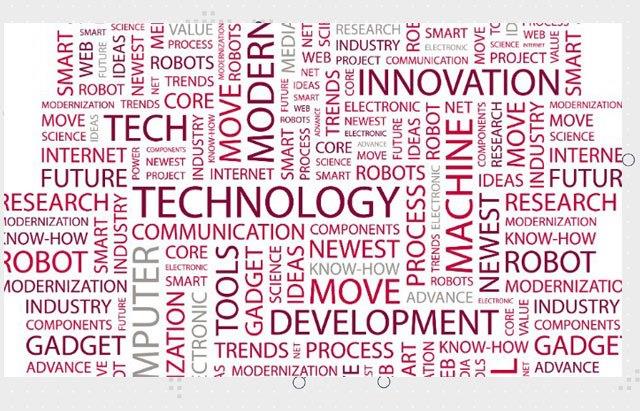Technology Trends – A Strange New World

Art Huenecke, Information Technology,
Academy of General Dentistry
With the continued convergence of all kinds of technological change and the human it is time to take a brief look and see where things are headed. Everything will be connected at some point soon. It will impact all and everything done a daily basis no matter what industry, career, or location.With everything going digital it is all about to converge as we gain economically from connections, focusing on the connections between devices, services, applications and information. All devices; compute and information resources, businesses, and individuals will be interconnected. The interconnections, dynamic and flexible change over time. This will lead to a series of changes and trends described below and they are digital convergence, smart machines, and new IT
Digital Convergence
This digital convergence is the collision of the physical and virtual worlds, as computing capability becomes embedded in everything around us. Opportunities for new business and operating models will appear.

Digital convergence impacts
The device convergence - The device convergence brings together desktop centered computing, mobile computing, the IoT, and cloud computing in a common connected framework of endpoints and services. This enables it to deliver digital experiences and support digital and algorithmic business opportunities.
Ambient user experience - Ambient UX deals with the new demands of delivering a simple, fluid, and rich experience over time to people across the full range of digital convergence endpoints. The ambient UX introduces an era in which people have access to their own personal cloud of services dynamically provided through intelligent agent based interfaces.3D-printing materials - Advances in 3D printing continue with an improved price performance ratio and increases in quality making it applicable to new markets. A limiting factor in 3D printing is the materials that can be used and the ability to print a single item with multiple materials. Advances in 3D-printing materials are creating opportunities for 3D-printed items.
Smart Machines
The smart machines describe how information of everything is developing to extract greater meaning from an expanding set of sources. Advanced data analysis technologies are evolving to create physical and software machines that learn and adapt rather than programmed for a finite set of prescribed activities.The amount of big data collected by the devices currently in place is mind boggling. New kinds of data will come from new types of devices at record rates. This oversupply may overwhelm those not prepared. For the prepared there is the potential to gain new critical intelligence and may be unlimited. Some companies will build a strong competency in turning this data into intelligence that will drive organizational future directions.
Smart Machine Impacts
Information of everything – Huge amounts of data from traditional systems, cloud sources, and the IoT create an overload that must be addressed by more advanced analytics integrated into new applications, business processes, and user activities.Advanced machine learning - Machine learning enables computers to act without being explicitly programmed. Massive amounts of data, advances in machine learning algorithms, and new hardware platforms that deliver parallel computing power will accelerate the machine learning.
Autonomous agents and things - Businesses and IT leaders have a range of opportunities to exploit machine learning. The opportunities offer the potential to deliver things, robots, autonomous vehicles, smart vision systems, virtual customer assistants, smart agents. Everyday objects such as a stethoscope, CRM systems, or security tools may have a smart and autonomous aspect.
New IT Reality
The new IT reality will evolve to support the world of digital and autonomous business that the digital convergence and smart machines enable. New architectures for security, systems, applications and services will be a must. Platforms will evolve to address the mobile computing challenges and the requirements of the IoT. Unless organizations address the architectural and platform issues they will not survive.
New IT reality impacts
Adaptive security architecture - Adaptive security architectures recognize that traditional access control and perimeter defense are not enough. A new set of tools is needed. Security must include application design, application testing with run time application self-protection for operational systems. User and entity behavior will deliver real-time monitoring and active protection for systems.
Advanced system architecture - Advances in system architecture, especially chip architectures to support parallel processing will help ignite the growth of smart machines.
Convergence app and service architecture - Cloud computing principles and adaptive, layered applications provide the foundation for the digital convergence. Software approaches that emphasize the creation of services, APIs and OS containers will provide greater deployment flexibility to support the digital convergence. Application architecture will also deal with the full range of potential endpoints, with an increasingly dynamic and intelligent UI layer assembling components as required.IoT architecture and platforms - Enterprise architects must consider security, privacy, cost, ease of access, agility and performance to determine the best architecture for their IoT initiatives. An IoT platform enables enterprises to monitor and control IoT endpoints and build applications to meet digital business requirements.

If we consider all of these changes to be truths, indeed we will coexist in a brave new world. A world of constant change and a proliferation of data and information to help guide day to day activities in all sectors of the economy.
Subscribe to Industry Era
News
This Apple Watch Case Could Kill All of Those Wannabe AI Devices
Google defends AI search results after they told us to put glue on pizza
Google scales back AI search answers after it told users to eat glue
FAA won't approve increased 737 Max production in near future
Thursday was a sour day for the US economy — with an important silver lining
OPEC+ working on complex production cut deal for 2024-2025, sources say
Stock futures inch lower as investors review earnings, brace for inflation report: Live updates
Salesforce Shares Plunge by Most Since 2008 After Weak Outlook
Jeep’s Wagoneer S Trailhawk concept teases a fully electric off-roader
Gap’s stock jumps 23% as the retailer swings to profit and raises guidance
Medline recalls 1.5 million bed rails linked to deaths of 2 women
Oil falls as Fed policymakers look to maintain rate cuts, gasoline stocks rise










